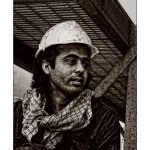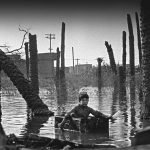 |
 |
Silk Road Gallery is the first gallery in Iran dedicated to the photographic medium. Founded in 2001 in Tehran, the gallery exhibits both art and documentary photography.
Its space is a platform made available to the artistic expression of Iranian photographers. The other side of the Silk Road Gallery’s activities is a constant participation in international events to present this rich and diverse scene to the Western public.

Our selection consists of documentary and staged photographs which illustrate two current trends in Iranian photography that our gallery represents each year: the violent reality and the dream.
Far from privileged thrills and special effects, photography in Iran today is the mirror of society.
The environment is one of Iran’s major challenges. Lakes, rivers and groundwater have dried up, vegetation is disappearing, sandstorms are common and people live in total poverty.
War, even after years, is omnipresent. Several generations bear the wounds which start to bleed whenever war is threatened. Paranoia sets in and theories sprout up like weeds. Remnants of the Iran-Iraq war still cause casualties among civilians whether from landmines or leftover poisons. Oil industry worker’s hard labor only brings them the dark side of black gold. Photographs speak to this.
Intimate photography is increasingly finding its place among the younger generation as a sign of Iran’s entry into the modern world. The lightness and the dream are nonetheless present. The ascent of mysterious characters, backstage at the film Life and nothing more with Kiarostami, Qajar women projected in modern attire holding contemporary objects, the beautiful landscapes of the North, and the reunion of lovers with the omnipresence of poetry.

Presenting the diversity of photographers and their work is a voluntary choice. Reducing the number of photographers in order to talk about this artistic trend in Iran still seems premature, especially since each photograph tells a story that complements the unknown, imagined or dreaded history of our country.
(A collaboration with Abbas, Magnum agency’s photographer had been scheduled but following his death it was canceled due to the lack of an agreement with his heirs.)
Article By Anahita Ghabaian-Etehadieh






